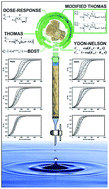Investigation of the continuous flow sorption of heavy metals in a biomass-packed column: revisiting the Thomas design model for correlation of binary component systems†
Abstract
Remediation of aquatic environments polluted by toxic heavy metals has become a focus of interest for many chemical and environmental engineers throughout the world. In the present study, rice straw was employed as a low-cost agricultural waste material for the removal of Cd(II) and Pb(II) ions from single and binary solutions. Isothermal biosorption experiments were conducted at 303.15 K using a column at various flow rates and bed heights. The breakthrough curves for single metal systems were fitted with the Thomas, Yoon-Nelson, bed-depth-service-time (BDST) and dose-response models. A new semi-empirical model based on the classical Thomas equation has been developed for simulation of the breakthrough curves for binary metal systems. This modified Thomas model, combined with sorption-inhibiting coefficients determining competitive sorption behavior, was found to represent the breakthrough data very adequately. The exhausted biosorbent bed was readily regenerated using an acid elution method involving a 0.05 mol l−1 HCl solution, and was reused for five consecutive sorption–regeneration cycles without significant loss of adsorption capacity. The used biosorbent also showed economic promise in the packed bed treatment of actual electroplating wastewater containing Cd(II) and Pb(II) ions.


 Please wait while we load your content...
Please wait while we load your content...